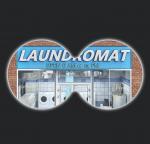CHICAGO — In concert with Beverly Kay Blank’s take on “Arming Yourself to Evaluate the Competition,” American Coin-Op asked a handful of laundromat owners what they think of keeping an eye on competitors, how they go about it, and what they try to learn. Let’s hear what a couple had to say:
JOHNNY AND JACK SEGAL, SOAP BOX LAUNDROMAT AND LAUNDRY SERVICE, ALABAMA
Johnny Segal owns and operates Soap Box Laundromat and Laundry Service, filled with 90 pieces of equipment, in Hoover, Alabama, a southern suburb of Birmingham. He’s been in the business 18 years.
Segal employs six attendants, split between part-time and full-time. He says that since son Jack joined him in 2019, Soap Box has tripled its wash/dry/fold and pickup and delivery service business.
Over the course of time, the elder Segal has regularly observed and evaluated his competition. That’s meant constantly checking their updates and reviews on their websites, and driving by and walking in to check the vend prices, out-of-order signs, and if they’re doing any upgrades. At times, someone from Soap Box phones a competitor to ask questions about services just to hear the attendant’s answers.
“I probably don’t do it as much now as I did the first dozen years or so, because I kept track of every laundromat in the city,” he says. “I probably went to 15 laundromats a week just to see who was doing business and who wasn’t doing business.”
Through the years, Segal formed the opinion that Soap Box was “doing it better than most, because I was the only laundry in my area that was owner-operated.”
Whenever sizing up a competitor, he’s looking closely at how much they’re charging their customers.
“The pricing, whether it’s machine pricing or wash/dry/fold pricing,” Segal says. “I keep track of it. It gives me a reason to raise prices. When they raise prices, I want to raise prices. Sometimes, I used to wait on my competitors to raise prices but I learned that if you think you need to raise prices, raise prices. Don’t worry about what your competitor is doing.”
It’s easier to track a challenger these days thanks to how much information is shared online. If a laundry installs new machines, they’re likely to post about it on their social media, says Jack Segal. If they’re doing lots of business, you can see it from their reviews.
“I’m not one, like my dad, to drive around and scout my competition once a week,” he says. “I don’t find it as prevalent. As long as I maintain my higher internet presence and keep garnering higher reviews than they are, then I’m not necessarily worried about people going to them.”
JOE JEPSEN, O-TOWN COIN LAUNDRIES, UTAH
Joe Jepsen, founder of property manager Diamond J Management, owns seven attended O-Town Coin Laundries in and around Ogden and Salt Lake City, Utah. Other than the 6,000-square-foot flagship location, O-Town stores average 3,000 square feet in size.
In his office is a 50-pound bag containing what Jepsen describes as the “cleanest clothing you have ever seen.” Why? It’s the prop he uses whenever he personally scouts competing stores.
“We make a point to keep a close eye on our competitors,” he says.
While waiting for his laundry, he texts all the information he needs—machine counts and sizes; price per cycle for each machine; vending prices and selections; camera and security systems; flooring choice; ceilings and general aesthetics; payment acceptance—directly to his phone.
He also takes note of things like parking capacity; entrances and exits (are there sliding or automatic doors?); machine age; and overall store condition.
“I created a very detailed spreadsheet—I call it my ‘Competition Spreadsheet,’” Jepsen says. “I have a tab for each of our locations, where I put my unit mix of all income-producing machines.”
Every O-Town data point is compared to the same for every competitor within a 5-mile radius; he relies on Google Maps to calculate the distance between a competitor and the nearest O-Town store.
Jepsen updates the spreadsheet every year or two, and whenever any new competitors enter his market.
“Having all the machines listed allows me to quickly refer to them and see their total washer/dryer count, as well as combined laundry machine count,” Jepsen says. “Having all the prices listed allows me to average them all out, so when I want to open a new store, or just look at doing a price increase, I can glance at the average price, and who the highest- and who the lowest-priced stores are.”
Jepsen says he’s learned a lot from evaluating his competition.
“I take competitors serious because I know many laundry owners are like me and want to take market share,” he says. “If you aren’t on the ball, guys and gals like me will eat your lunch if you’re asleep at the wheel.”
Check back Tuesday for the conclusion!


Have a question or comment? E-mail our editor Bruce Beggs at [email protected].







